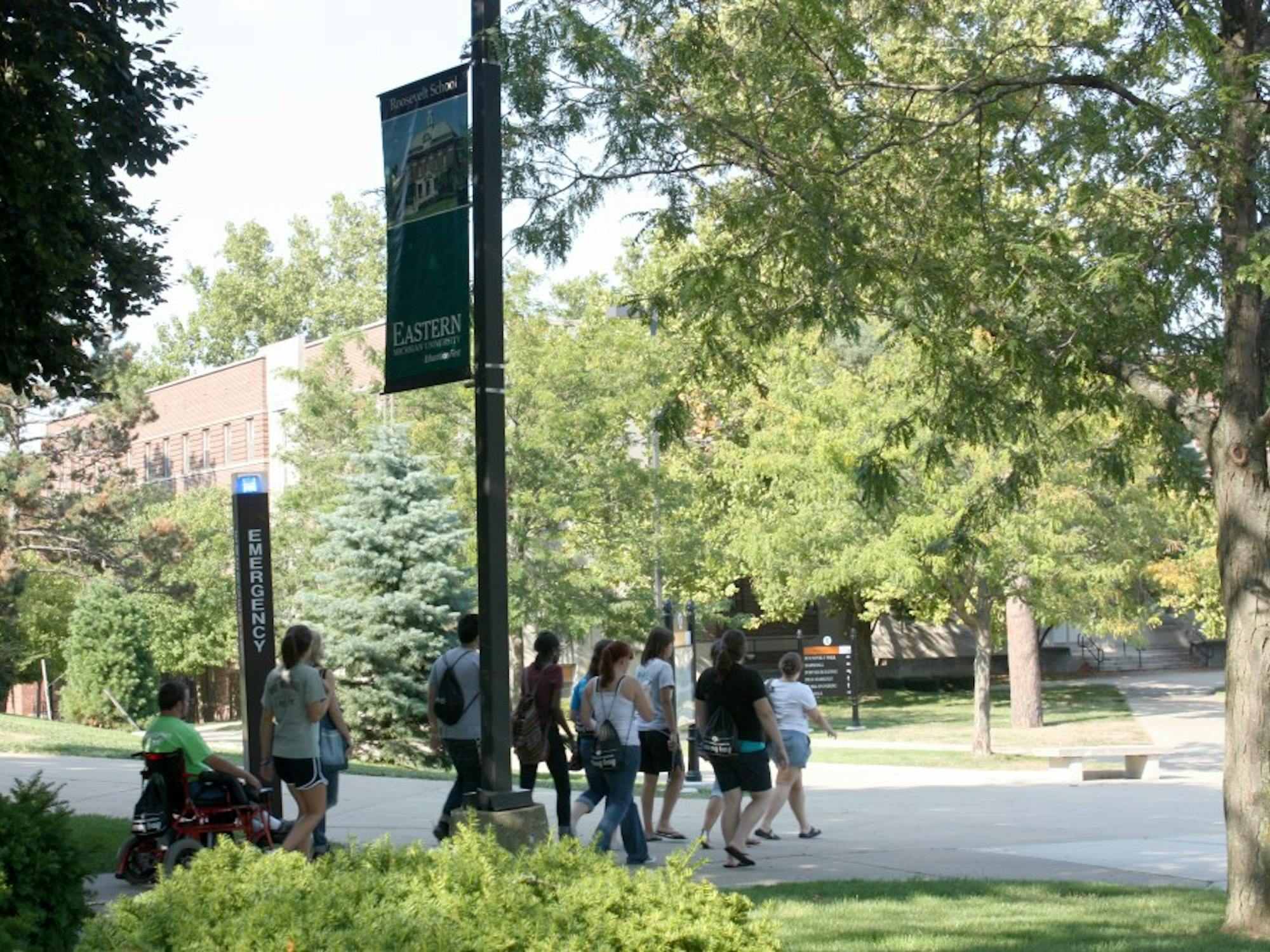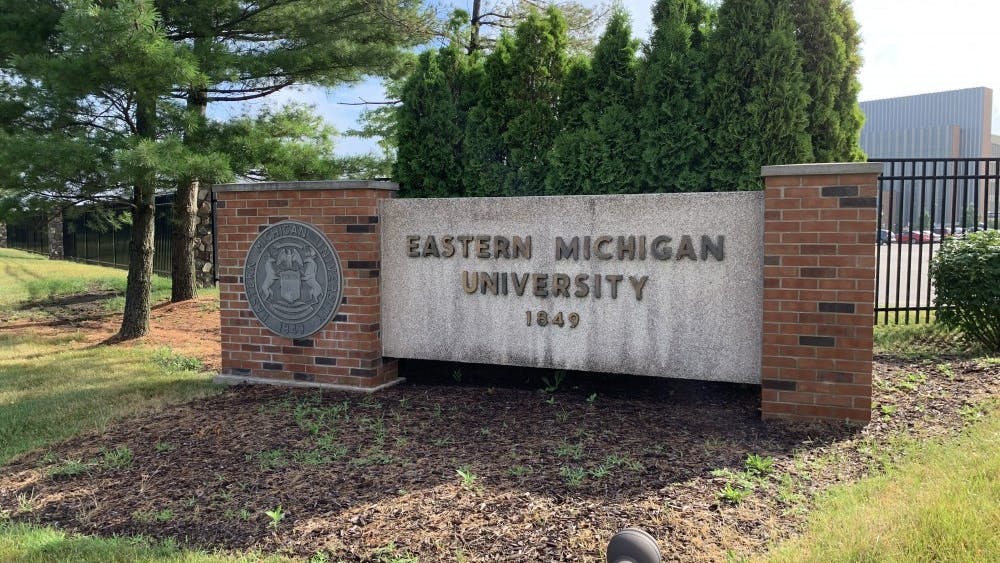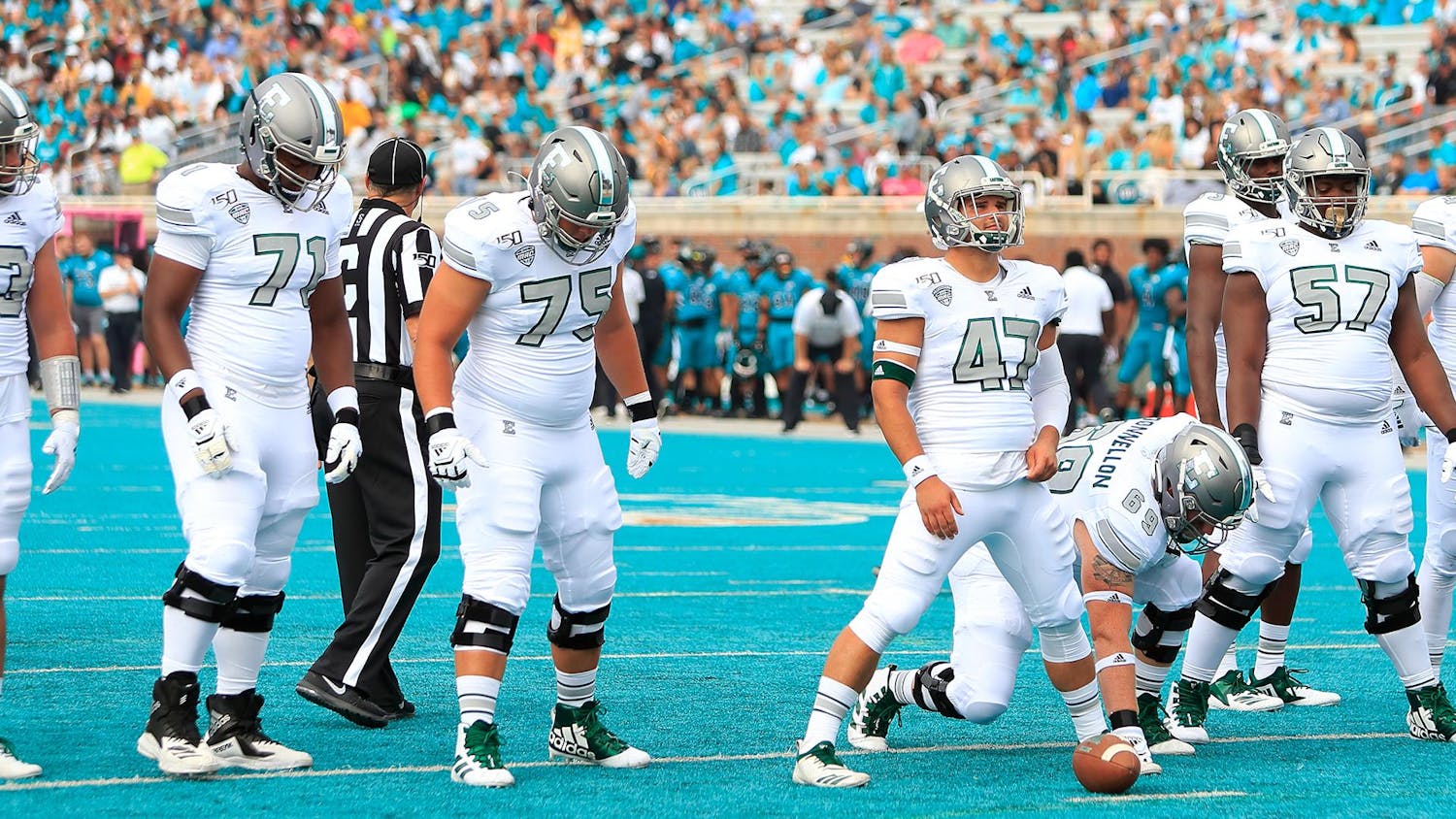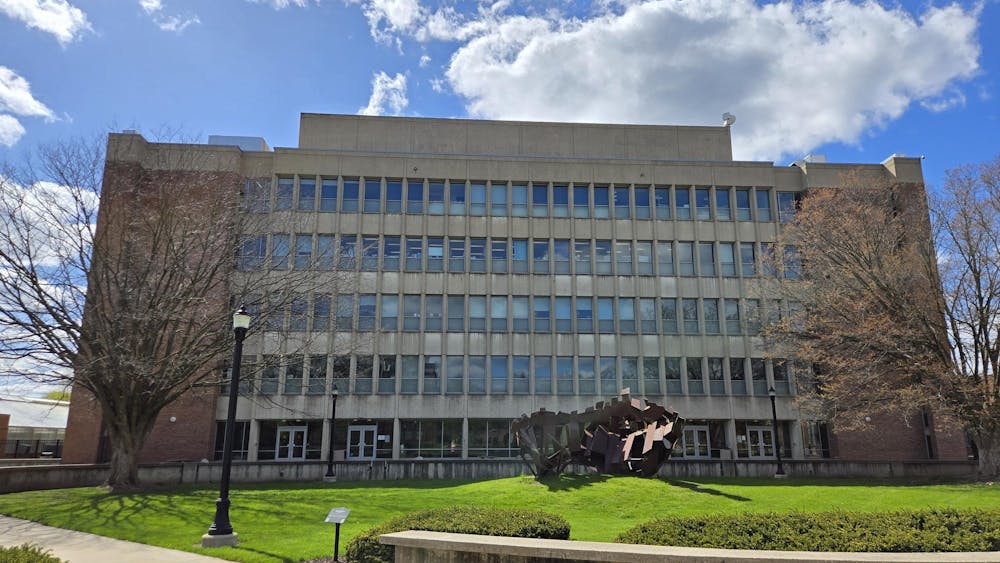Eastern Michigan University President Susan Martin approved the investment of roughly $78,000 of the university’s 2012-13 contingency fund this year to upgrade the 42 blue light emergency phones located around EMU’s campus. The upgrade was prompted by the Aug. 24, 2011 unarmed robbery of EMU student Darin Thomas Smith
outside the Warner Building.
“We want students to feel confident that if they reach for that phone it’s going to work,” Martin said.
EMU’s Department of Public Safety reported Jeremiah Kena Sawyer, who received a three year and eight month sentence April 25 for the crime, stole Smith’s backpack containing a laptop, iPod and wallet from the gymnastics room in the Warner Building.
The DPS report stated Smith pursued Sawyer outside the building to recover the backpack, at which point Sawyer dropped the property and punched Smith in the face four times.
EMU student Debra Ennis, who knew Smith and was at the scene, tried to push the panic button on the nearby emergency phone to call for assistance. However, Ennis was forced to use her cell phone to contact police when the equipment failed to work.
DPS Detective Joe Braunschneider said the emergency phone outside of the Warner Building hadn’t been working for about six months, and multiple work orders had been submitted to EMU’s Physical Plant Division requesting its repair.
“When … President [Martin] found out … about eight o’clock at night, I think that thing was working by midnight,” Braunschneider said.
Martin said EMU’s contingency fund fluctuates from year to year depending on its approved budget for the academic year, but usually ranges from $750,000 to $1 million, which she said is fairly small for a university with a current overall yearly budget of almost $300 million.
“We don’t have a lot of extra money, but something that matters to the safety of our campus I obviously would put that a very high priority, and not make it wait for next year’s budget. In other words we need to do that now,” she said.
Martin said EMU is a large campus and occasionally incidents do happen, but the university has been very proactive when it comes to safety. They are continually working to improve its infrastructure and the emergency equipment was enhanced to provide the DPS with better support.
“It’s like a lot of things on this campus,” Martin said. “We’re 163 years old and we’re constantly improving things, but we have 122 buildings and it’s just like wireless [Internet]. We’re working aggressively to try and improve our wireless coverage. This technology also needed to be enhanced and upgraded to be at its best, and so we’re constantly trying to do that. Particularly when it comes to safety issues; they move to a higher priority.”
There is, however, at least one emergency assistance station in the west entrance of Sill Hall that has been out of order since June of this year. When asked about this particular station, DPS Chief of Police Robert Heighes said there is a parts supply issue with the current vendor, and there are two parts needed for the station’s repair that have not been received as of yet.
After the unarmed robbery incident, PPD Director of Purchasing Dean Backos said not only the equipment but the process of maintaining the equipment itself was reassessed.
“We kind of took a step back right when it happened and started looking at the whole process. Not just the phones, but the process,” Backos said. “What was going to streamline the process from a fixing perspective? If something’s wrong with it, it shouldn’t have to go to one department for one thing and outsourced to a vendor for another.”
Backos also said the phone technology itself was inherently old and unable to offer self-monitoring.
Within the next month new software is slated to be installed for the upgraded emergency phone system that will allow the DPS to send a test signal from their headquarters to verify the functionality of all 42 emergency phones, which is the self-monitoring aspect Backos spoke of.
Heighes said the emergency phones will still need to be physically verified on a weekly basis to ensure the individual phones haven’t been vandalized in a way the self-monitoring system may not register, but is pleased with the overall upgrade in technology and changes in procedures.
“It was a learning process. That event went on and it caused us to look at [the process] and it was a good thing,” Heighes said. “We got good things out of it in return and it’s understood around the university that this is a priority. These phones have to work; those [emergency assistance stations] have to work. I can’t have them out there and not working.”
Heighes said some of the previous emergency phones were installed as many as 25 years ago, as additional units were added to the campus over the years.
Along with the outdoor 42 blue light emergency phones, there are also 50 emergency assistance stations located inside the doorways of buildings and more than 400 cameras around campus.
Visit EMU’s website for additional safety and security tips.










